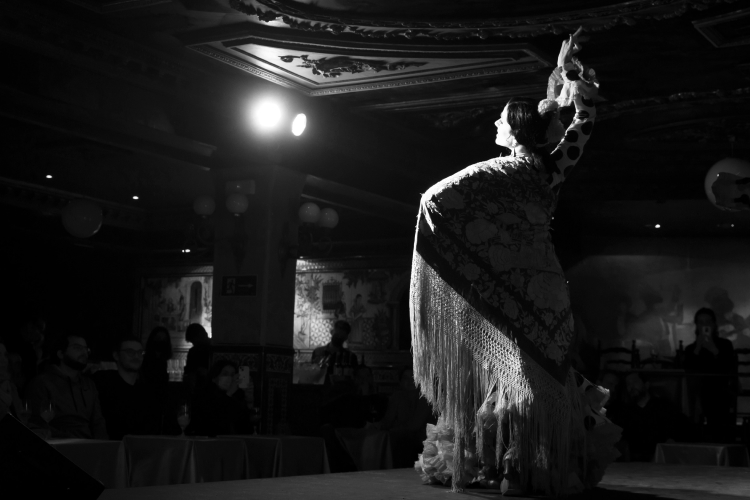
El Yiyo: The New Legend of Flamenco
The stage welcomes a flamenco phenomenon: El Yiyo.

The Tangos (not to be confused with the Argentine Tango) are one of the styles most associated with the gypsy people and the party, and there are different ways of being sung depending on the locality where they are sung. We can find varieties in Extremadura, Jaen, Malaga, Seville, Cadiz and Granada. In Madrid are characteristic the Tangos of the neighborhood of Caño Roto, from where most of our artists come from. They are characterized by their own rhythm and sound, especially in the guitars, which has been captured in groups such as Las Grecas, Los Chorbos, Los Chichos or Los Chunguitos. A neighborhood in which guitarists like David Jiménez, José Jiménez ‘El Viejín’ or ‘El Entri’ have transmitted their knowledge to great figures of the current flamenco guitar.
Tangos are, together with bulerías and rumbas, the best style to celebrate and party. Whether at a meeting or on stage, this palo has the function of lifting the spectator from his seat and celebrating joys and sorrows.
The references and themes that we find in these lyrics do not follow a unique model but you will find all kinds of allusions and feelings in the lyrics of tangos. They are short and catchy lyrics that follow one after the other.
It is a palo (style) that is not usually danced as a main style in the tablao. It is usually found as a second part of other styles such as Tientos or Taranto or as a style to sing in the musical intermission. However, in meetings and parties it is sung and danced in a relaxed way, without attending to a structure or an audience.
The way of dancing this palo is characterized by strength, suggestiveness, movement of the hips and a courting attitude.
The different styles of flamenco adhere to the genre progressively. Tango is mainly characterized by its rhythmic pattern, which, according to the latest research, comes from the slaves of Santiago de Cuba. These were developing the pattern at the beginning of the 19th century, arriving in Cadiz under the name of “tango americano”, very different from what we know today as tango flamenco. At this time it was introduced as a number in zarzuela works, acquiring an important fame. Later the tango or “tanguillo” of Cadiz, known today for its use in carnivals, was developed and it was not until the late nineteenth century that it was adapted to the aesthetic and musical codes of the flamenco genre, becoming considered a style well into the twentieth century.
Here are some examples of Tangos
Enjoy!